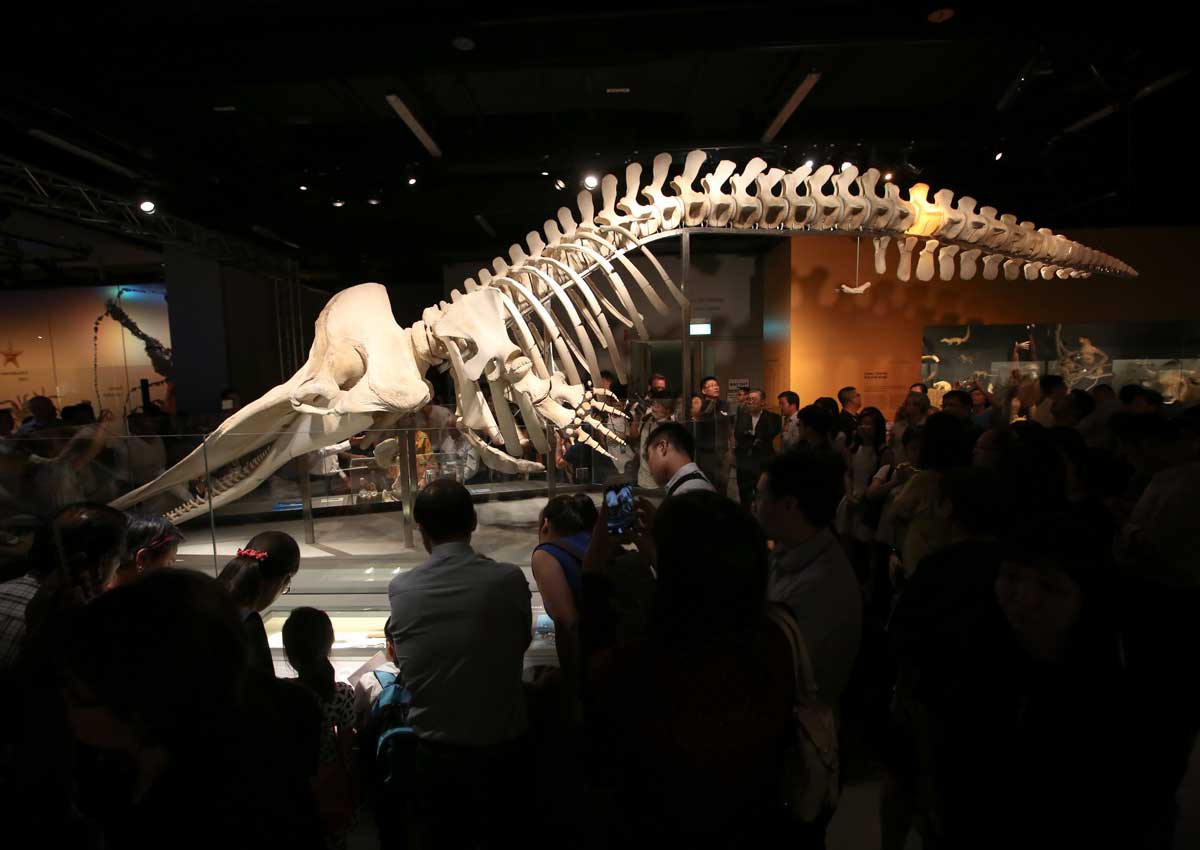The latest attraction at the Lee Kong Chian Natural History Museum – the skeleton of a whale found floating in Singapore waters off Jurong – goes on display from today.
Visitors can get close to the skeleton and see it “eye to eye” – it is displayed in a diving pose with its skull just 1m off the floor.
This is unlike most museum whale skeletons, which are usually hung horizontally near the ceiling.
“We wanted to give the whale a natural pose in a limited space,” said museum conservator Kate Pocklington, who was one of five researchers at the museum involved in preserving the skeleton.
The skeleton of the adult female sperm whale takes pride of place in the mammals section of the museum at the National University of Singapore.
The carcass of the 10.6m-long whale was discovered floating off Jurong Island on July 10 last year – the first time the marine mammal has been spotted in Singapore waters.
Museum scientists say it is likely to have died after being hit by a ship, as its dorsal hindquarters had a large wound. Broken backbones were also found below the injury.
It was nicknamed Jubi Lee by museum staff, as it was found during the nation’s Golden Jubilee year.
“As an older Singaporean, I am overjoyed by the return of a whale to our natural history museum,” said Ambassador-at-large Tommy Koh, who was at the official launch of the whale exhibit last night.
The skeleton of a 13m-long Indian fin whale was shown at the old National Museum from 1907 to 1974 before it was given to Malaysia.
“Jubi Lee is even better than the whale we gave away because it was found in our waters, because it belongs to a species seldom found in our waters, and because the skeleton is in perfect order,” he added.
The museum’s head, Professor Peter Ng, told The Straits Times it was rare for the whale skeleton to be preserved and mounted in just eight months.
“In most countries, the carcass is buried, allowed to rot, and only after several years is the skeleton excavated… We have expedited the process through very hard work – no mean feat. And it did not come cheap.”
The museum has raised around $1.3 million for scientific and educational efforts related to the sperm whale carcass. Half of it went to setting up the exhibit, while the other half will be used for marine biodiversity education and research.
Besides marvelling at the size of Jubi Lee, visitors can learn more about its biology, the threats it faced, and how it was discovered.
Plastic cups and bags found in its gut, for instance, will be on display.
Educator Mary Lim, 38, who was at last night’s event, said it could teach children about the value of fossils. Her son, Elijah, seven, said of the plastic found in the whale’s gut: “It is disgusting and sad that the whale ate them, they look dirty.”
Tickets to Lee Kong Chian Natural History Museum can be bought at the door – at $16 for adult Singapore residents, and $9 for children. For more details, go to lkcnhm.nus.edu.sg.
audreyt@sph.com.sg

This article was first published on March 15, 2016.
Get a copy of The Straits Times or go to straitstimes.com for more stories.






